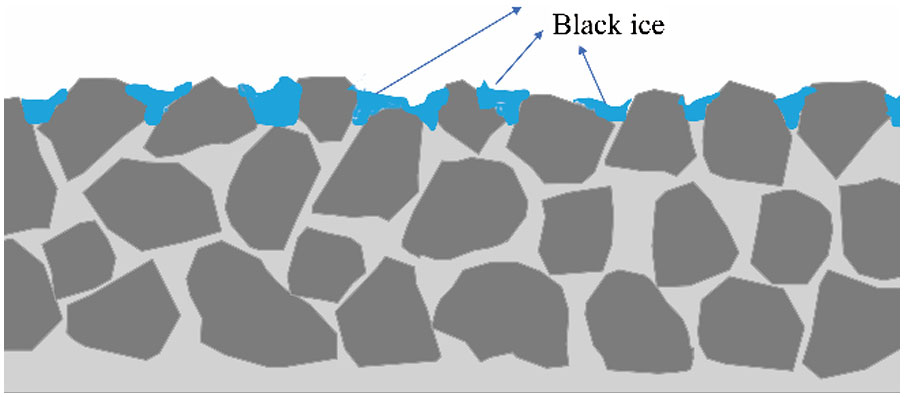Black ice is a thin coating of ice on a surface, notably on a road surface, as shown in Fig. 1. Black ice is not black but visually transparent, allowing the road below to be seen through it. Thus, black ice will appear black on a road surface and appear gray or tan on a concrete road surface. Black ice road looks exactly like wet road, but vehicle tire friction on an icy road surface is obviously smaller than on wet. Driver misjudgment of road conditions will lead to traffic accidents. The formation of black ice requires temperatures below 0°C and water such as atmospheric precipitation or water vapor or cooling water sprayed by trucks. In order to reduce traffic accidents, a road sensor that accurately identifies black ice conditions is necessary.
Various detection methods have been proposed to liberate workers from dangerous and tedious road conditions monitoring. Tabatabai proposed to distinguish road surface conditions by detecting changes in resistance between two sets of poles embedded in concrete. Xu used dielectric constants of ice at different frequencies to determine whether dielectric between electrodes is ice or water. Xu established a geometrical optical model to predict the relationship between reflected power and incident angle at different road conditions and then used the relationship to classify dry, icy, and wet surface conditions. Jonsson used detectors that have their peak sensitivity at different wavelengths to distinguish between the dry, wet, snowy, and icy surface conditions. Several other technologies have been proposed to detect road conditions. However, these detection methods are focused on the identification of water and ice and cannot effectively identify black ice on a road surface.
In this paper, a new method of detecting black ice state is proposed. This method uses a tri-wavelength, 1310, 1430, and 1550 nm noncontact optical technology. By comparing the normalized reflectance under different conditions, the interval of the black ice state is determined. Therefore, the black ice condition could be identified.

Schematic diagram of black ice. (Image by XIOPM)


